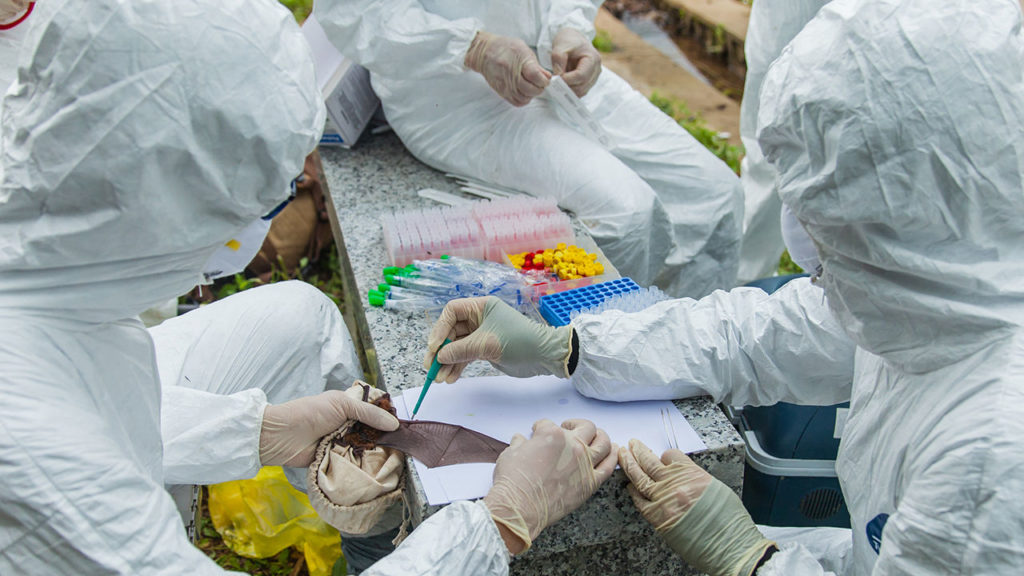
A team of EcoHealth Alliance researchers in China’s Guangdong province last year biopsied a bat’s wing to identify its species. Researchers examine partial genetic sequences of 781 coronaviruses found in bats in China, but couldn’t tie any to COVID-19 the article said.
LOGAN – Dr Nicki Frey, a bat expert who works as a human wildlife conflict specialist for Utah State University Extension, weighed in on bats and COVID-19 recently.

She said compared to bacteria and parasites, there aren’t very many viruses that can be transmitted from one mammal to another; those viruses fit under the general label of ‘zoonoses’. Equine encephalitis, hantavirus, and rabies are the big ones; but recently we now have the recent crossovers like Avian Influenza (Type A viruses), swine flu, SARS and recently COVID-19 has emerged as one.
“To be transmissible to a human, a virus must mutate into something that can affect the human cell system, rather than the type of animals it is originally designed to infect,” she said. “Then it must be transmitted from the mucus of the host to the mucus of a human. And this is rare.”
Frey said a dog can get a strain of parvovirus that is lethal to it; but its owner cannot contract this virus, even though the owner has close contact with the dog.
It is not often that viruses can hop from one species to another. A dog, for instance, with a virus can’t pass it to a human.
“As far as I can find out, all these crossovers (meaning they cross from birds to mammals, or other mammals to humans) occurred because of animal husbandry practices or animal consumption practices that are far different in other countries than ours,” Frey said. “The people that originally contracted the viruses slept closely to their domesticated animals that first contracted the disease.”
Those infected animals were often housed in highly dense situations.
“Scientists suspect that handling bushmeat (wild animals including bats) that was unknowingly contaminated caused the transmission of the recent coronavirus pandemic, but it is too soon to know for sure,” she said. “To date, there is no confirmation that Ebola, SARS or COVID-19 was transmitted from a bat directly to humans. And we don’t know what species was the original host of these viruses.”
Scientists are understanding viruses and reporting them better than they ever have. And with remote areas getting more medical attention, it can appear that there are more zoonoses out there than there used to be. Researchers don’t know that this is the case.
“As we travel more often into wild places and we build homes and infrastructure into forests and remote areas, we inevitably interact with wildlife more,” Frey said. “Therefore, there is increased opportunity to get a mutated virus from another mammal; but it is still rare.”
As a human wildlife conflict specialist, she said this only reinforces the need to keep a respectable distance from wildlife and to remember that they aren’t pets.
“We can love our wildlife without directly interacting with them. If a wild animal is infected with a virus that we could get, we would likely have to be in contact with the body fluids of that animal in order to contract the virus” she explained.
There is no reason for humans to be getting that close to any wild animal. If you find a dead animal, put on thick gloves before handling the animal, she advised.
“In conclusion –yes bats carry viruses. To date, the only virus that we can get from a bat in North America, that we know of, is rabies,” the professor said. “Keeping your distance from bat colonies, not handling live bats, and safe handling of any dead animals one finds, will keep you safe from contracting rabies.”

